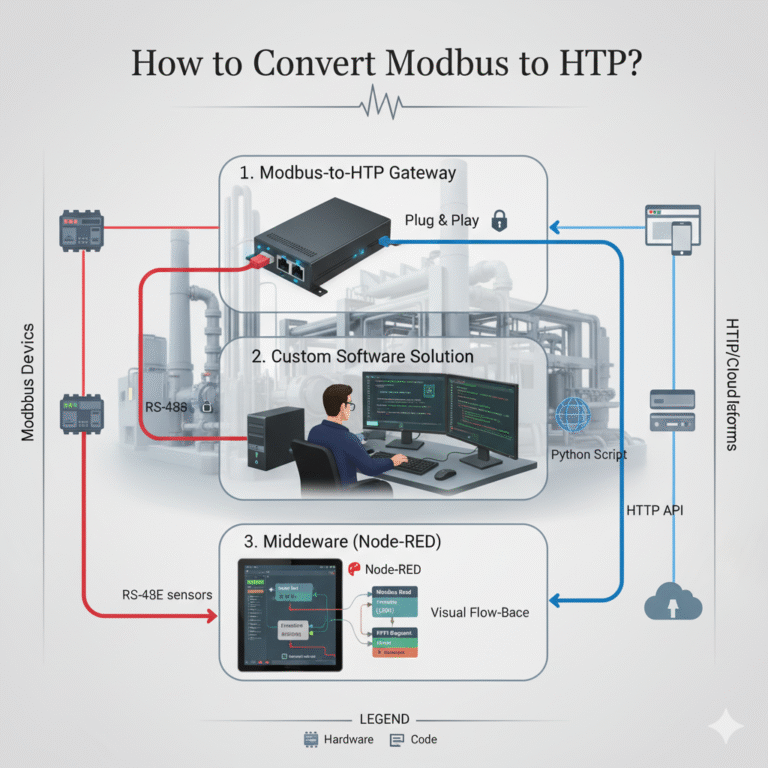In the era of industrial automation, efficient communication between devices is crucial. Modbus, as a widely used communication standard, allows different devices to exchange data. However, with the advancement of internet technologies, converting Modbus data into HTTP protocol provides an easier way to achieve remote control and monitoring. This article discusses why it’s essential to convert Modbus to HTTP and how to do it.
Why Convert Modbus to HTTP?
1. Remote Access Demand
With the increasing prevalence of industrial automation, users expect to access and monitor devices remotely, regardless of their physical location. Converting Modbus data to HTTP enables users to view device status and perform control actions via web browsers, making operations more flexible and convenient.
2. Platform Compatibility
While Modbus is typically used in specific industrial environments, HTTP is a global protocol that powers the internet. By converting Modbus to HTTP, devices from different platforms can seamlessly integrate, facilitating communication and data sharing across various systems.
3. Simplified Data Display
HTTP supports various data formats, such as JSON and XML, which are well-suited for online data visualization. With this, users can access clear and intuitive information displays. This is a vast improvement compared to traditional Modbus interfaces, enhancing the user experience.
4. Improved Security
When using HTTP, security can be enhanced through encryption methods such as HTTPS. This helps secure data transmissions and reduces the risks of cyberattacks, making the system more reliable.

How to Convert Modbus to HTTP?
There are several common methods to achieve the conversion of Modbus to HTTP:
1. Using a Modbus-to-HTTP Gateway
Many ready-made Modbus-to-HTTP gateways are available on the market. These gateways allow devices to connect through serial ports or networks. The gateway then converts Modbus requests into HTTP requests and sends the data to a web server. This method is simple and direct, suitable for most users.
2. Custom Software Solutions
For those with programming experience, it’s possible to write custom code to perform the conversion between Modbus and HTTP. Languages such as Python or Java, along with libraries like PyModbus, can be used to read Modbus data and upload it to the web via HTTP APIs. This method offers high flexibility but requires some coding knowledge.
3. Using Middleware
Middleware solutions, such as Node-RED, can facilitate a visual flow-based configuration to link Modbus and HTTP. This method allows users to quickly configure connections through drag-and-drop interfaces, making it an excellent choice for those who prefer visual setups.

Conclusion
Converting Modbus to HTTP not only improves remote access convenience but also enhances the interoperability between devices, boosts security, and provides a better user experience. With numerous methods available—from plug-and-play devices to custom coding—users can choose the best solution based on their specific needs. As digital transformation continues to advance, Modbus-to-HTTP conversion is becoming a key technology for many industrial applications, laying a solid foundation for the intelligent development of enterprises.
